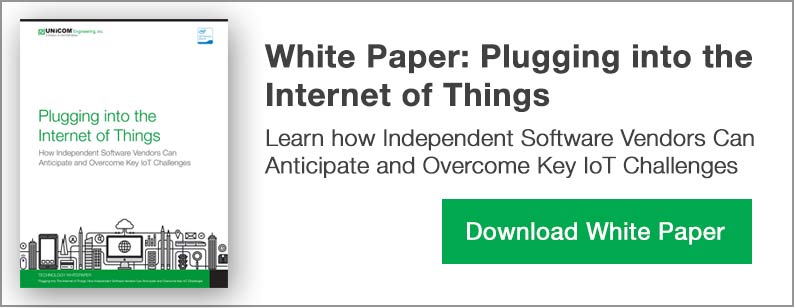IoT has already lead the way for smarter enterprise manufacturing and exciting consumer use cases, and now the public sector is next in line to start benefiting. If all goes as it seems, the impact will be huge. Cisco anticipates that the market for Internet of Things (IoT) within the public sector—including the increased demand for servers and storage to capture, store and analyze data captured by connected “things”—could equate to a $4.6 trillion value stake within the next decade.
Fire departments, electrical grids, building infrastructure, highways, municipal services and more are already being swept up in the wave of innovation as pilot programs and research operations explore the capabilities IoT ecosystems might bring. Server applications vendors are presented a tremendous opportunity to capitalize on the unique scalable ventures that are emerging as our governments consider how IoT might lead to more efficient cities and safer, happier citizens.
What’s in Store for the Public Spaces of Tomorrow
As commercial ventures and research teams extrapolate the current IoT functionality, governments around the world are jumping into the fray to see what emerges. Here are some of the more pertinent examples of ambitious IoT programs that could soon see broad adoption across a host of different economies:
Fighting Fires with Data
Remote disaster response presents inherent communications problems. Forces of nature like mudslides and wildfires rage across the landscape, toppling critical telecommunications infrastructure like cellular towers and data lines. Without these systems, first responders are left to a series of improvised measures.
As you can imagine, having communications like cell phone signals disrupted can make first responders feel almost stranded. They lack the aggregated information available from the collective teams, sometimes causing their decision-making capabilities to deteriorate. Without a line to the home, they lack the critical answers they need to effectively fight fires or mitigate disasters.
Thanks to IoT capabilities, that’s all set to change. “IoT technology can be used to extend the Internet into new areas and create an ad hoc communication structure,” GovLoop reports. “Once a communications infrastructure is deployed, first responders and emergency managers can use this new network to better coordinate response tactics.”
Less Waste on Waste
Enevo is a Finnish company that hopes to revolutionize the way municipal services collect garbage, all with simple sensors. By installing the sensors in waste bins throughout the large city of Espoo, Finland, they were able to better-optimize waste retrieval routes by skipping bins that were less than 40 percent full.
Using this data to gradually build models and observe trends, governments could eventually gain critical insights into how to best structure municipal waste retrieval for cost savings and emissions reductions.
Pollution Tracking that Won’t Make You GASP
Frustrated with the adverse impact pollen count has on their sneezy citizens, Chattanooga opted to partner with the University of Texas in order to develop an air quality sensing array named GASP. By installing a set of sensors that can analyze particulate matter across 10 municipal power sites, the city could get a clearer picture of how pollen and pollution traveled across the city. While Chattanooga intends to use this data to learn more about allergens, other cities like UT’s Dallas would be interested in how air pollution patterns relate to air quality in general.
Leveraging Public Sector IoT Global Appliances Opportunity with Minimal Risk
You may already be developing or considering the development of IoT solutions such as the ones described above to provide an innovative capability for municipal, state and federal organizations. While developing IoT-enabled solutions can present challenges, system integration and deployment partners like UNICOM Engineering can help clear hurdles and accelerate time to market.
Learn more about our system integration and IoT deployment capabilities by reading our white paper “Plugging into the Internet of Things: How Independent Software Vendors Can Anticipate and Overcome Key IoT Challenges.” You can download the informative white paper by clicking on the button below.

